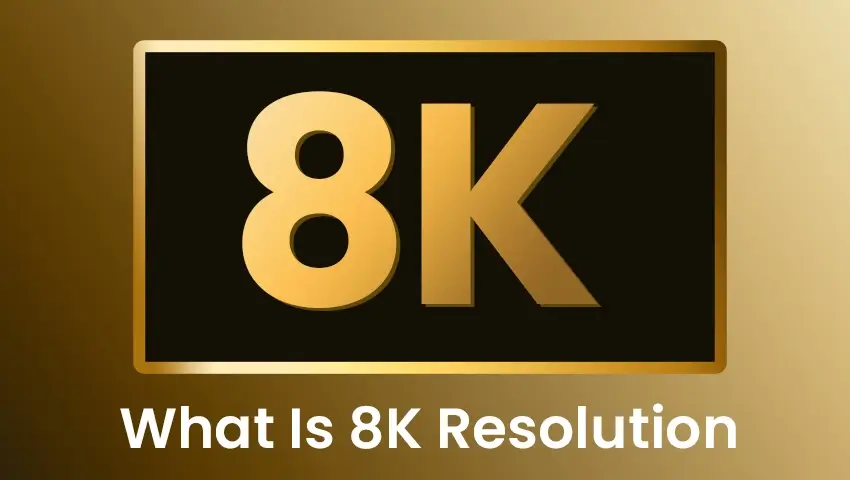With rapid advancements in display technology, 8K resolution has become the latest buzzword in the world of televisions, monitors, and cameras. But what exactly is 8K resolution, and how does it compare to previous standards like 4K and Full HD? In this blog, we’ll break down everything you need to know about 8K resolution, its benefits, challenges, and whether it’s worth upgrading.
Contents
Understanding 8K Resolution
8K resolution refers to a display resolution of 7680 × 4320 pixels, which amounts to over 33 million pixels. This is four times the pixel count of 4K (3840 × 2160) and sixteen times that of Full HD (1920 × 1080). The higher pixel density results in an extremely sharp and detailed image, making it ideal for large screens and professional applications.
How Does 8K Compare to 4K and 1080p?
Resolution Pixel Count Common Use
- 1080p (Full HD) 1920 × 1080 (2 million pixels) Standard TVs, Monitors, and Streaming
- 4K (Ultra HD) 3840 × 2160 (8 million pixels) Premium TVs, Gaming, and Content Creation
- 8K (Ultra HD) 7680 × 4320 (33 million pixels) High-end TVs, Professional Use, and Future Streaming
Key Differences:
- Sharpness & Clarity: 8K offers unmatched clarity compared to lower resolutions.
- Screen Size: 8K is best suited for larger displays (65” and above).
- Content Availability: While 4K has become mainstream, 8K content is still limited.
The Benefits of 8K Resolution
- Unparalleled Detail: The massive pixel count provides ultra-clear images, especially on large displays.
- Better Scaling for 4K Content: 8K TVs use advanced upscaling technologies to enhance lower-resolution content.
- Immersive Viewing Experience: 8K offers realistic visuals, making it ideal for professional content creation and gaming.
Challenges of 8K Resolution
1. Lack of Native 8K Content
- Currently, most movies, TV shows, and games are produced in 4K or lower resolutions. Streaming platforms like Netflix and YouTube have only begun testing 8K content.
2. High Bandwidth Requirements
- Streaming 8K content requires significant internet speed (at least 50-100 Mbps), which may not be accessible to everyone.
3. Expensive Hardware
- 8K TVs and monitors are still costly.
- Requires powerful GPUs for gaming at 8K.
Is It Worth Upgrading to 8K?
If you are a content creator, professional editor, or technology enthusiast, investing in 8K can future-proof your setup. However, for the average consumer, 4K remains the best value choice for now, given the limited availability of 8K content.
Conclusion
8K resolution represents the next step in display technology, offering an unparalleled viewing experience. However, challenges like high costs and limited content mean that 8K is still in its early stages. While it’s not yet a necessity for most people, it will likely become mainstream in the coming years as content and hardware continue to evolve.

